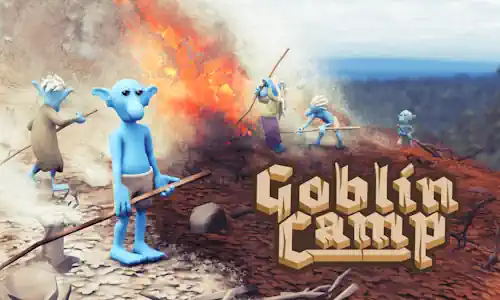The Forest
Goblin Camp is set in a forest, and that’s no coincidence. Where Tolkien’s goblins were only really comfortable underground, and the goblins of the Warhammer world roamed the plains, our goblins are definitely forest-dwellers. Finnic paganism developed in the northern forests, and much later, when the idea of a Finnish national identity was invented, forests became very important to it. So it was obvious to us that our game needs to take place in a forest.
When is a forest not a forest, though? When it’s a tree plantation. All over the world, fewer and fewer forests are in anything like a natural state. Of course, deforestation has been going on ever since ancient times, but it’s accelerated greatly over the last few centuries.
A particularly important development was the invention of scientific forestry in 18th-century Germany. The idea of scientific forestry was to create forests optimized for human use. In such a forest, trees of the same kind would be planted at the same time, at optimal intervals, to ensure maximal lumber production. These are what we call “economic forests” (talousmetsä) in Finnish. They don’t support anything like the diversity of life that forests in their natural state do, and are much more vulnerable to various diseases and destructive insects.
Because these tree plantations can be made to produce predictable amounts of lumber, though, they’ve spread all over the world. A common practice is to clearcut a parcel of forest, which means cutting down all the trees and destroying any bushes or other smaller plants. Tree saplings are then brought in and planted, and a tree plantation begins to grow, replacing the original forest. The plantation can then be cut down when the trees have reached the desired age, and replanted.
These tree plantations are replacing natural forests everywhere. Finland, for example, is proportionately the most heavily forested country in Europe, with something like three quarters of our surface area covered in woods. Yet of all this forest, less than three percent is in a natural state. All the rest has been clearcut, and much of it is tree plantations, made up of almost entirely single tree species, all of the same age. In southern Finland, where we all live, less than one percent of forest is in a natural state.
What this means for us is that, paradoxically, if we want to set our game in the kind of forest our ancestors lived in, and where Finnic paganism was born, we need to create a forest that’s very different from the one that most Finnish people today know.
The one thing a forest in its natural state has and a clearcut tree plantation doesn’t is diversity. A natural forest has all kinds of different trees. Of course, all trees have their preferences in terms of light, soil and other things, so some kinds of trees will be more common than others in places. But there will still be a much wider variety of trees.
There will also be trees of completely different ages. Sometimes trees die from diseases, pests or lightning strikes and forest fires. Dead trees may remain standing for a long time, or get knocked down in a storm. In a forest in a natural state, there’s a lot of dead wood lying on the ground, in various states of decomposition, and bushes and young trees growing in the gaps left by dead trees. The longer a forest stands, the bigger the discrepancies can become: trees can live for centuries, and massive ancient trees can exist right next to young saplings. A natural forest lives and changes as time goes on.
We want the forest in Goblin Camp to be like this: diverse, alive and dynamic. We’ve modeled lots of different trees, bushes and other plants, with particular preferences for soil type, light and wetness. When we generate a map for a game, we first figure out how the underlying terrain is formed by glaciers, and then simulate the forest growing on it. As I’m writing this, the simulation runs a century of forest growth every time you start a new game. And the trees don’t stop growing when the game starts, either: through the game, trees will grow older, die, and be replaced by new ones. Chopping down trees will open up new spaces for plants that thrive in the light, and some plants even prefer to grow near buildings you’ve built. You can practice forestry of your own by cutting down tree saplings or clearing bushes, to make space for kinds you’d rather see. Because the forest is a living environment, your actions as a player will change the woods your goblins live in.
The northern forest is the indispensable backdrop for Finnic paganism, and for Goblin Camp. Later on, we’ll be taking a look at some of the creatures and spirits that live in these woods.
